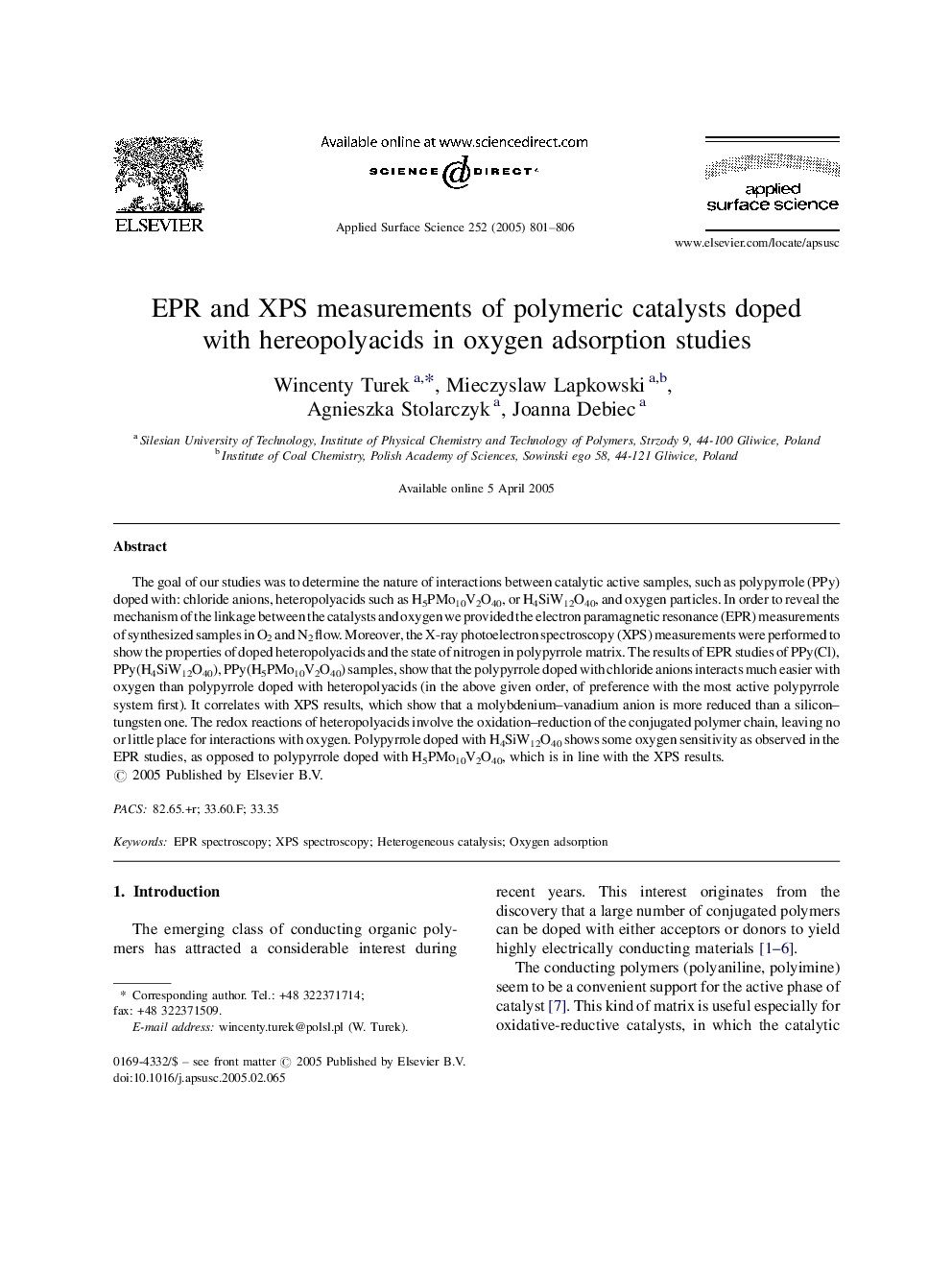| Article ID | Journal | Published Year | Pages | File Type |
|---|---|---|---|---|
| 9566762 | Applied Surface Science | 2005 | 6 Pages |
Abstract
The goal of our studies was to determine the nature of interactions between catalytic active samples, such as polypyrrole (PPy) doped with: chloride anions, heteropolyacids such as H5PMo10V2O40, or H4SiW12O40, and oxygen particles. In order to reveal the mechanism of the linkage between the catalysts and oxygen we provided the electron paramagnetic resonance (EPR) measurements of synthesized samples in O2 and N2 flow. Moreover, the X-ray photoelectron spectroscopy (XPS) measurements were performed to show the properties of doped heteropolyacids and the state of nitrogen in polypyrrole matrix. The results of EPR studies of PPy(Cl), PPy(H4SiW12O40), PPy(H5PMo10V2O40) samples, show that the polypyrrole doped with chloride anions interacts much easier with oxygen than polypyrrole doped with heteropolyacids (in the above given order, of preference with the most active polypyrrole system first). It correlates with XPS results, which show that a molybdenium-vanadium anion is more reduced than a silicon-tungsten one. The redox reactions of heteropolyacids involve the oxidation-reduction of the conjugated polymer chain, leaving no or little place for interactions with oxygen. Polypyrrole doped with H4SiW12O40 shows some oxygen sensitivity as observed in the EPR studies, as opposed to polypyrrole doped with H5PMo10V2O40, which is in line with the XPS results.
Related Topics
Physical Sciences and Engineering
Chemistry
Physical and Theoretical Chemistry
Authors
Wincenty Turek, Mieczyslaw Lapkowski, Agnieszka Stolarczyk, Joanna Debiec,
